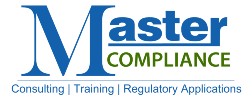Reviewing your current mid-year compliance budget plan and adjusting for the rest of the year is important. With COVID-19 taking up a substantial portion of the first half of the year, your vision and budget for 2020 may have drastically changed.
With the new ever-changing landscape, firms must review, reassess, and reprioritize compliance responsibilities and deadlines. As operational, technological, and regulatory expenses continue to rise year after year, putting adequate resources into your compliance program is now more important than ever. Below are a few key considerations when performing a mid-year review for compliance budget planning purposes.
Identify Your Key Compliance Budget Areas for 2020
Depending on the size and scope of your firm, areas of compliance can be found within technology, training, legal, sales, management, staffing, procedures, risk, audit, supervision, and operations. Understanding where your resources are organized is a great place to start. Did you spend more money than allotted on technology to transfer your company to work from home? Did you have more legal fees than anticipated? Knowing where and why your money is going will allow you to take a clear picture and plan for the rest of the year.
Understand Your Needs and Risks
The business of compliance relies heavily on risks, deadlines, and regulatory requirements. Regulation Best Interest (Reg BI) is a perfect example. Implementation of the Reg BI rule may require firms to focus on monetary and staffing resources to be in compliance. Firms should review their compliance calendar, new rules, unique firm risks, training, SEC Examination Priorities, and/or FINRA Risk Monitoring and Examination Priorities and determine if they currently have enough resources budgeted to mitigate and accomplish each area applicable to their firm. Firms should also conduct assessments and analysis of the program to identify additional gaps and deficiencies.
Look Back and Adjust Going Forward
The first half of 2020 was a new normal for many firms. With that new normal comes the realization that certain first-half goals and priorities may not have been met. Many regulators understand the unique challenges and burdens placed on Firms to fulfill certain requirements (i.e. branch office inspections during statewide stay-at-home orders). Nevertheless, one thing that the SEC, FINRA, and State regulators have noted is that firms should identify programs and parts of the business that may have been affected and create a plan to adjust. This should also apply to the budgets for those areas. Explore items completed and items outstanding. Does the Firm require adjustments in budgets or other resources to accomplish each item?
Don’t Be Afraid to Ask for Help
The terms “technology” and “outsourcing” can help firms accomplish their compliance goals and requirements. Technology advances in the space of compliance have supported many firms and created more efficient tools for staff to fulfill these daily, weekly, monthly, quarterly, and annual compliance program requirements. Does your Firm make the best use of the technology you already pay for? If not, it’s time for you to learn about additional available features. Are there day-to-day items that could be made more efficient with task management systems and automated workflows? If so, research compliant friendly options. Don’t forget to review and assess electronic recordkeeping requirements and vendors’ ability to comply with them (i.e. third-party attestation letters). Finally, outsourcing certain compliance functions to experienced vendors and consultants can support firms and provide the expertise that may not be available or may be more expensive to do in-house.
MasterCompliance provides expert consulting, outsourcing, and implementation tools in planning and budgeting your firm’s compliance responsibilities. If there are any areas where you would like to explore additional assistance or services, please contact us.

